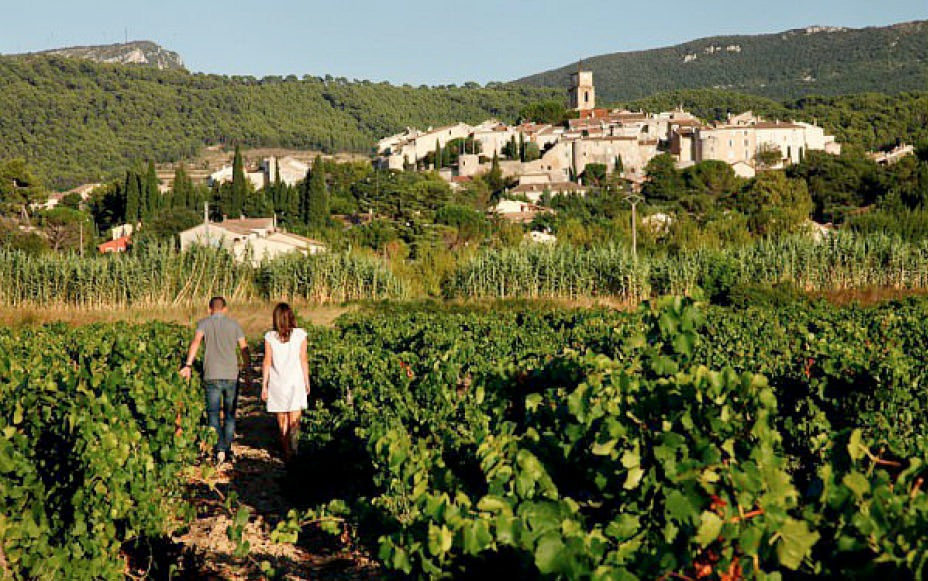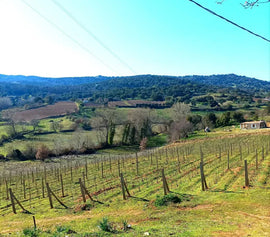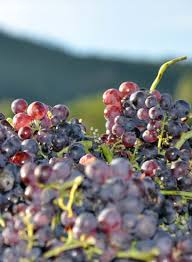Côtes du Rhône Rosé
The Côtes du Rhône region has a winemaking history that dates back to before Roman times. Its wines, particularly those from the right bank, were favored by monarchs and the papal community in Avignon during the schism. By the mid-1600s, the Côte du Rhône on the right bank had established regulations to ensure the quality of its wines. In 1737, the king mandated that barrels of wine transported from the nearby river port of Roquemaure, located 12 km north of Avignon on the left bank, should bear the letters CDR to create a system for protecting their provenance. These early regulations laid the groundwork for what would eventually become the nationwide AOC system overseen by the INAO. Approximately a century later, the name evolved to Côtes du Rhône when wines from the left bank were incorporated into the appellation. Full official recognition was granted by a High Court ruling in 1937, with subsequent revisions to the rules occurring in 1996 and 2001 to adapt to new production conditions.
M. Chapoutier is one of the most renowned wine producers in the Rhône Valley of France, with a history deeply rooted in the region's viticulture and a strong commitment to biodynamic winemaking. The Chapoutier family's connection to winemaking dates back to 1808, in Tain-l'Hermitage, a small town in the northern Rhône Valley. The family initially operated as négociants (wine merchants), but they quickly became known for producing high-quality wines, particularly from the prestigious Hermitage appellation. Michel Chapoutier took over the business in 1990, and his leadership marked a transformative period. He introduced biodynamic viticulture, focused on single-vineyard expressions, and emphasized low intervention winemaking and minimal use of new oak, preserving purity of fruit and terroir.
Fun fact: M. Chapoutier was one of the first wineries to use Braille on wine labels, starting in 1996. This was inspired by Michel Chapoutier's admiration for Maurice Monier de la Sizeranne (a blind man and wine lover from Hermitage) and reflects a broader commitment to inclusion and respect.
Domaine de la Solitude wine estate is part of one of the most ancient families in Châteauneuf-du-Pape, tracing its lineage back to the 15th century. In the 17th century, Hélène Barberini, who hailed from the renowned Tuscan family of the same name, tied the knot with Claude Martin, the proprietor of a vineyard in Châteauneuf-du-Pape. Their grandson played a pivotal role in elevating “La Solitude” by introducing the first label for the Appellation. Consequently, “le Vin de la Solitude” became synonymous with quality and began its journey to international markets, showcasing an exceptional terroir. Eight generations later, the estate remains family-owned and is currently managed by Florent Lancon.
Think Pink!
Carrie Upson- General Manager
|
Region: AOP Côtes-du-Rhône, France |
About the Vineyard: Planted mainly in stony-marl soils and on clay-limestone slopes, these soils are porous with a steady and regular water supply. They warm up quickly in the spring and help the grapes to reach perfect maturity. About the winemaking: Comprised of a blend of Grenache, Syrah, and Cinsault, the juice comes from a direct pressing and then is cold settled. The alcoholic fermentation is carried out at low temperature (16°C). Constant protection from oxygen to preserve the wine’s aromatic potential. Tasting notes: An expressive wine with aromas of apricot, fennel and floral scents. The wine's roundness is a perfect match for its freshness and the finish reveals subtle notes of aniseed. “"a dry, mellow and succulent rosé" with "plenty of small berries, melon and mild spices on the nose.” 91 Points James Suckling |
|
|
Winemaker: Michel Chapoutier |
||
|
Price per bottle/Price per case: $18.99 |
||
|
Suggested Food Pairing: Grilled and roasted white meats, fish and shellfish, salads. Perfect for picnics with mild creamy cheeses. |
||
|
Region: Côtes du Rhône AOC, Rhône Valley, France |
About the Vineyard: The vineyard is cultivated with the greatest respect for nature and people. The grapes come from terroirs made of sands and clay-limestone gravels located at high altitude, between 300 and 400 meters above sea level. About the winemaking: The grapes are harvested at night. They are directly pressed after harvest. After settling, the must is fermented with natural yeasts in concrete tanks at 18° C. The wine is then aged on fine lees for 4 months. Tasting notes: “A delicious, supple and refined rosé made of 40% grenache, 40% cinsault and 20% syrah. Notes of tangerines, small berries, stones and wild herbs. Medium-bodied with a well-rounded, subtle texture. Bright and precise with a beautiful finish. From biodynamically grown grapes with Demeter certification. Drink now. “ 91 Points james Suckling |
|
|
Winemaker: Florent Lancon |
||
|
Price per bottle/Price per case: $19.99 btl |
||
|
Suggested Food Pairing: Ideal as an aperitif with an anchoïade, aubergine caviar, but also with a cod with aioli, stuffed calamari, grilled lamb chops. Delicious with all summer recipes. |
||





